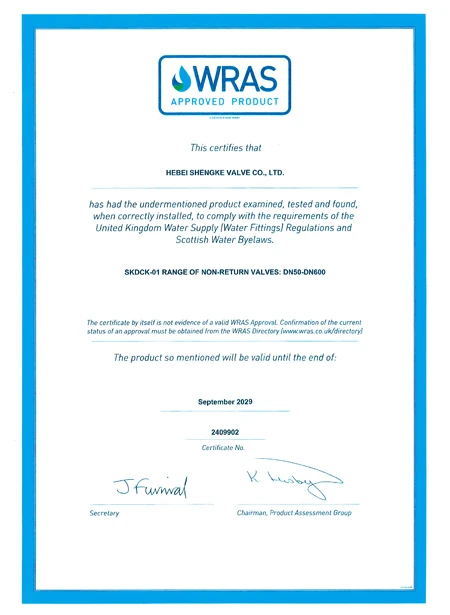Nov . 10, 2024 03:21 Back to list
2-Inch Foot Valve for Efficient Water Flow Management and System Performance Enhancement
Understanding the 2 Foot Valve A Key Component in Fluid Management
Foot valves are crucial components in various fluid management systems, particularly in pump installations. Among different sizes and types, the 2-inch foot valve holds significant importance due to its balance of flow rate and versatility. This article aims to delve into the key aspects of the 2-inch foot valve, including its construction, function, applications, and maintenance.
What is a Foot Valve?
A foot valve is a type of check valve that is installed at the bottom of a pump's suction line, typically submerged in the fluid being pumped. Its primary purpose is to prevent backflow, ensuring that the pumping system remains primed and ready for operation. The foot valve operates by allowing fluid to pass through when the pump is running while blocking it from returning when the pump shuts off.
Construction and Design
The design of a 2-inch foot valve typically includes a body, a strainer, and a closing mechanism (often a ball or flapper). The valve body is constructed from various materials such as PVC, brass, or stainless steel, depending on the application and the type of fluid being used. The choice of material is critical, as it affects durability, corrosion resistance, and the overall efficiency of the valve.
The strainer is an essential component of the foot valve, as it prevents debris and sediment from entering the pump and causing damage. A well-designed strainer can significantly enhance the longevity of the pumping system.
Functionality and Operation
The operation of a 2-inch foot valve is straightforward but vital. When the pump is activated, it creates a vacuum that draws fluid into the valve. The pressure difference allows the valve to open, facilitating the flow of liquid into the pump. When the pump stops, the pressure equalizes, and the foot valve closes, preventing the liquid from flowing back into the source.
This mechanism is crucial in applications where the pump needs to maintain its primed condition. If the foot valve fails or is not functioning correctly, the pump may lose its prime and require manual re-priming, which can cause significant downtime and inconvenience.
Applications
The 2-inch foot valve is commonly used in various applications across numerous industries, including agriculture, construction, and water treatment
2 inch foot valve

1. Irrigation Systems Farmers often use foot valves in irrigation setups where submersible pumps draw water from wells or ponds. The foot valve ensures that water remains accessible and prevents air from entering the system.
3. Sump Pumps In residential settings, sump pumps often employ foot valves to manage groundwater and prevent basement flooding.
4. Industrial Processes Many industrial applications that require the movement of liquids or slurries also rely on 2-inch foot valves for their reliability and efficiency.
Maintenance and Troubleshooting
To ensure the long-term performance of a 2-inch foot valve, regular maintenance is essential. Here are some key maintenance steps
1. Inspection Regularly inspect the valve for signs of wear, corrosion, or clogging. This is especially important for the strainer, which can become obstructed by debris.
2. Cleaning If the strainer is dirty, it should be cleaned promptly to maintain optimal flow rates and system efficiency.
3. Testing Periodically test the valve by manually operating it to ensure it opens and closes properly. This can help identify potential issues before they become critical.
4. Replacement If the foot valve shows significant wear or damage, it may be necessary to replace it. Given the crucial role it plays in pump function, investing in a quality replacement can save time and money in the long run.
Conclusion
The 2-inch foot valve is an integral component in various fluid management systems, offering reliability and efficiency across numerous applications. Understanding its construction, functionality, and maintenance can help ensure optimal performance and prolong the life of associated pumping systems. Whether in agricultural irrigation or municipal water supply, the proper functioning of foot valves is essential for efficient water management and resource conservation. Regular maintenance and attention to the operational aspects of foot valves can contribute significantly to the success of fluid movement systems.
Share